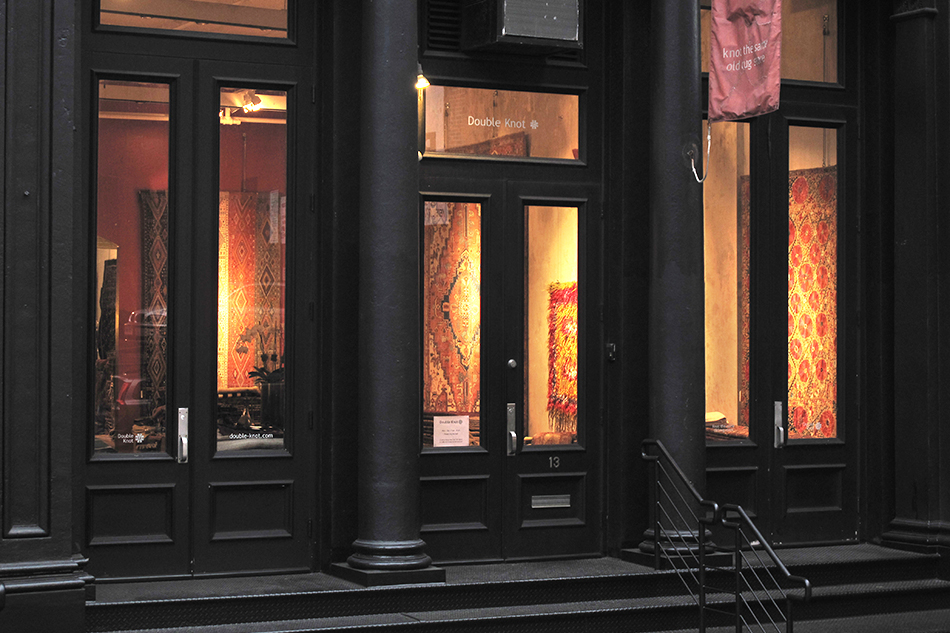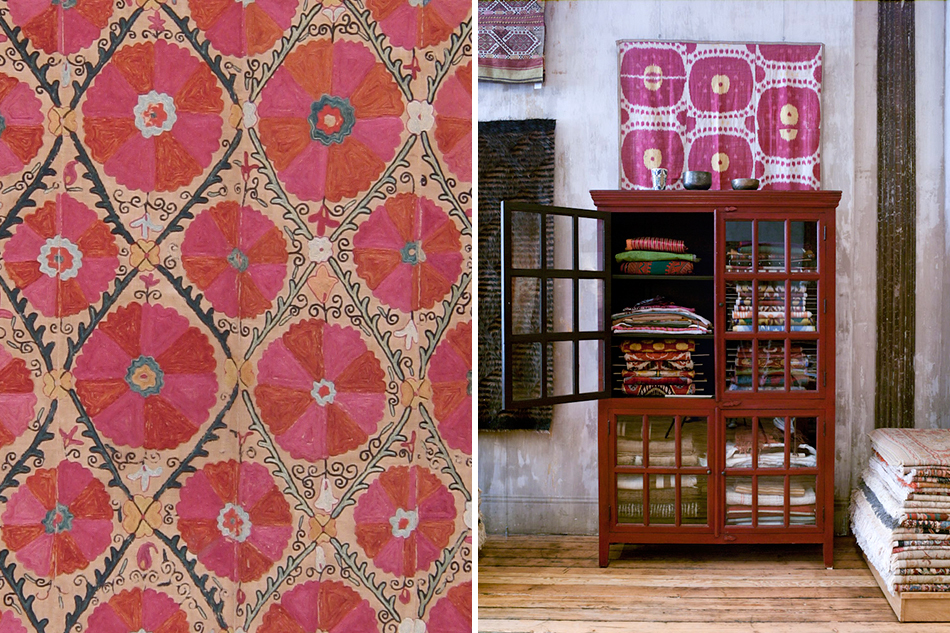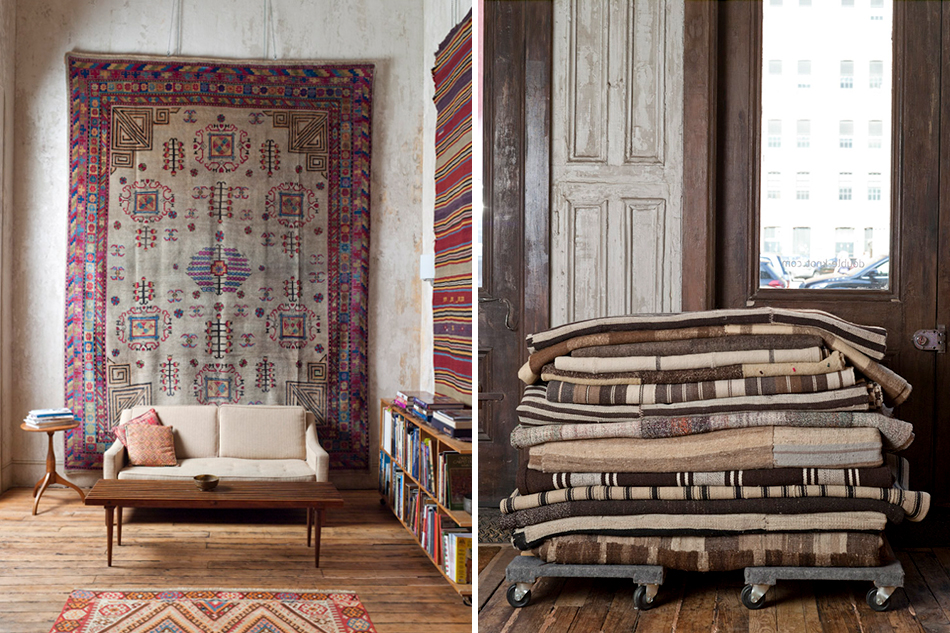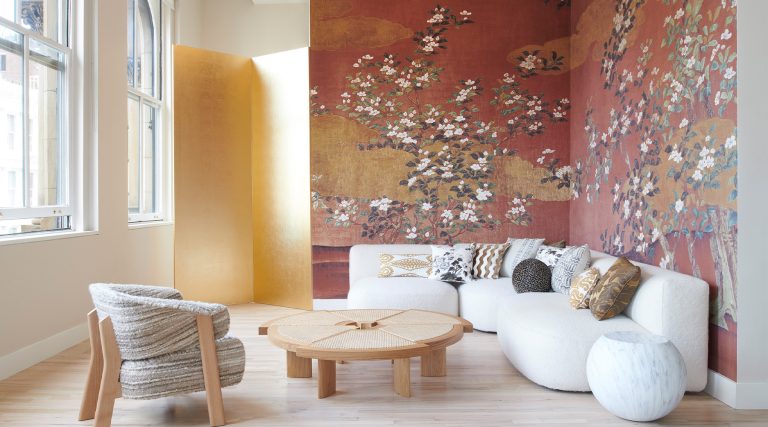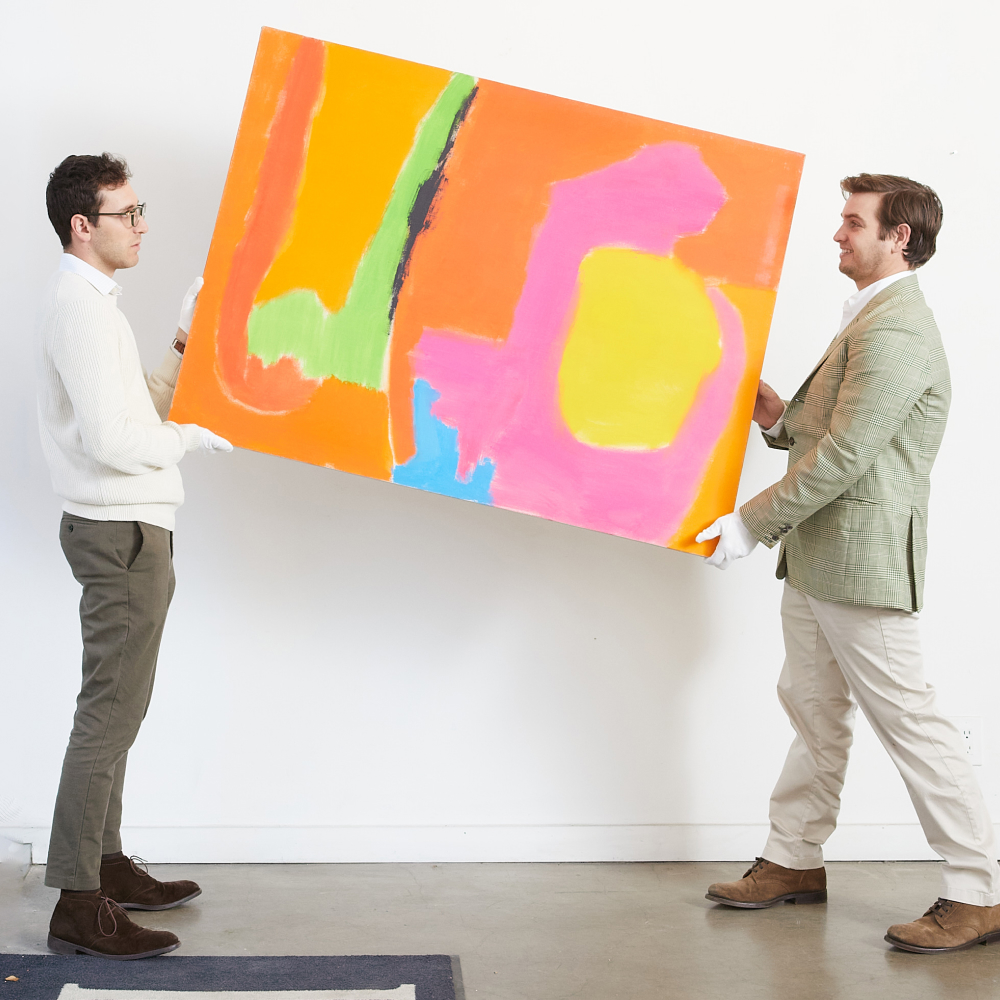
October 21, 2009Double Knot‘s owner, antique-rug specialist Murat Kupcu, stands in front of a 19th-century angora Oushak carpet. Top: Double Knot’s main room, looking north. Photos by John Gruen, unless otherwise noted
Our motto is ‘knot the same old rug store,’ and it’s a good reflection of what Double Knot is all about,” says the New York shop’s owner, Murat Kupcu, who over the past seven years has creating a unique experience for carpet-lovers. Kupcu’s journey from collector to proprietor spans both centuries and countries. “My first apartment when I was living in Istanbul had eighteenth-century rugs on the walls,” says Kupcu, who grew up on Turkey’s west coast. “My then-future wife was very impressed when she first walked in. I’m pretty sure that’s part of the reason why she married me!”
Kupcu started collecting rugs in college even though he was studying engineering at the time. “I was getting increasingly interested in history, architecture and archaeology,” he says, “and Istanbul had so much to offer.” In addition to its abundant culture, the city had a vibrant network of artists, art dealers and rug merchants. “On the weekends, I spent a lot of time at the shop of one of the best dealers, which was a gathering spot for many locals and expats. After observing so many people buying rugs, I started cultivating my own eye. Rugs soon became a passion.”
After moving to New York City in 1998, Kupcu left a career in luxury travel to make his hobby official. “There was no rug shop where I could enjoy spending time, so I decided to open one.” Finding the location was purely serendipitous. At the time, “I had no idea which New York neighborhood would be suitable,” says Kupcu. “But a friend of mine whose wife had just opened a bakery in the Village suggested Tribeca. Literally, that day we walked down West Broadway, I saw a ‘for rent’ sign on a nineteenth-century warehouse with seventeen-foot-ceilings and antique finish on the walls, so I called the telephone number on the sign.”

A 19th-century silk robe from Central Asia, an early-20th-century kilim from central Turkey with a prayer niche design and a mid-20th-century long-haired tulu rug in vibrant colors from western Turkey hang above piles of additional carpets. Photo by John Gruen
Double Knot — named for a carpet-making technique that is also referred to as the Turkish knot, and thus a nod to Kupcu’s heritage — features hand-woven carpets, rugs, kilims and other traditional textiles from Turkey, Iran, Central Asia and the neighboring regions that share the same weaving culture. “Since I am from Turkey, that’s where my interest started,” says Kupcu. “But the reasons why I chose to focus on these regions goes beyond my personal connection. The depth and breadth of the weaving culture of these countries, ranging from palace carpets to nomadic rugs and kilims, is unparalled.”
Constantly mining a network of sources from San Francisco to Bukhara, Kupcu seeks out his carpets from the best-known dealers and experts, as well as local contacts in tribal areas. “Even vintage pieces are getting harder to find,” he says. “We are in the twenty-first century after all. Finding good antique and vintage pieces is going to be a big challenge for all of us going forward.” Whether he’s appraising kilims (“I love their intense colors”) or antique suzanis (“the nineteenth-century ones of Uzbekistan are among the most magnificent embroideries ever created”), Kupcu always pays particular attention to the condition of the carpets to ensure they are either very well preserved or restored to the highest standards. “There are so many rugs that find their way straight from the estate sale to showrooms without even being properly cleaned,” he says. “I think it turns many people off.”
When he isn’t searching for or maintaining his precious inventory, Kupcu makes sure to keep expanding his knowledge. “Initially, I was focused on antique tribal weavings so I had to quickly become proficient in decorative carpets because I realized I was in the business of helping people decorate their homes, not running a museum,” he explains. Kupcu also strives to make the store as accessible as the shops he once frequented in Istanbul. “We have a great space, which is excellent for displaying rugs on the walls,” he says. “Trying to hang a selection that best represents our range is always a challenge, but I strive to be ready for whomever comes through that door.” And as eclectic as Double Knot’s range is, there is one variety of carpet visitors won’t find inside. “People have said that if I didn’t sell modern carpets, I was out of fashion and that I would not survive selling only old rugs,” says Kupcu. “But luckily, that did not turn out to be the case. The world of rugs and textiles is so vast that I hope I get to do this for many, many years.”

